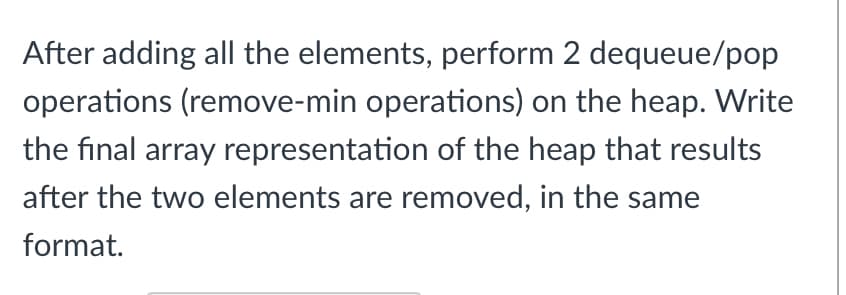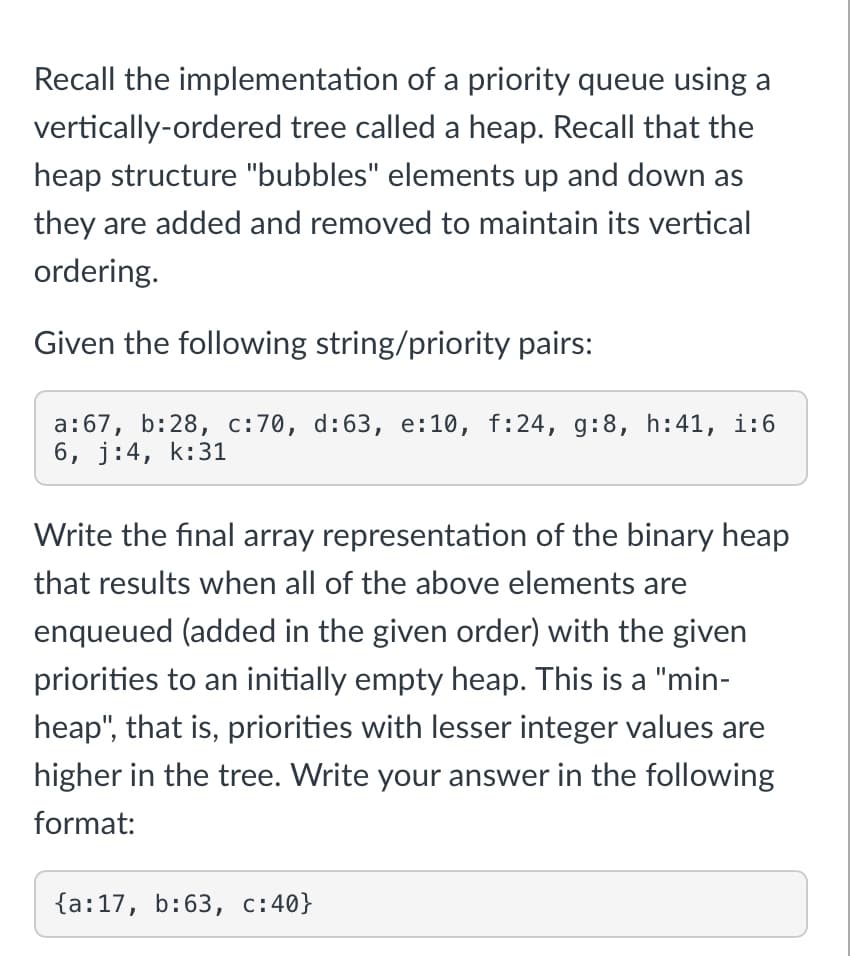Recall the implementation of a priority queue using vertically-ordered tree called a heap. Recall that the heap structure "bubbles" elements up and down as they are added and removed to maintain its vertical ordering. Given the following string/priority pairs: a: 67, b:28, c: 70, d: 63, e:10, f:24, g:8, h:41, 1:6 6, j:4, k: 31 Write the final array representation of the binary heap that results when all of the above elements are enqueued (added in the given order) with the given priorities to an initially empty heap. This is a "min- heap", that is, priorities with lesser integer values are higher in the tree. Write your answer in the following format: {a: 17, b: 63, c:40}
Recall the implementation of a priority queue using vertically-ordered tree called a heap. Recall that the heap structure "bubbles" elements up and down as they are added and removed to maintain its vertical ordering. Given the following string/priority pairs: a: 67, b:28, c: 70, d: 63, e:10, f:24, g:8, h:41, 1:6 6, j:4, k: 31 Write the final array representation of the binary heap that results when all of the above elements are enqueued (added in the given order) with the given priorities to an initially empty heap. This is a "min- heap", that is, priorities with lesser integer values are higher in the tree. Write your answer in the following format: {a: 17, b: 63, c:40}
Related questions
Question
Java heap operations
Can you help me explain in detail and how to show the problem?

Transcribed Image Text:After adding all the elements, perform 2 dequeue/pop
operations (remove-min operations) on the heap. Write
the final array representation of the heap that results
after the two elements are removed, in the same
format.

Transcribed Image Text:Recall the implementation of a priority queue using a
vertically-ordered tree called a heap. Recall that the
heap structure "bubbles" elements up and down as
they are added and removed to maintain its vertical
ordering.
Given the following string/priority pairs:
a: 67, b:28, c:70, d:63, e:10, f:24, g:8, h:41, 1:6
6, j:4, k:31
Write the final array representation of the binary heap
that results when all of the above elements are
enqueued (added in the given order) with the given
priorities to an initially empty heap. This is a "min-
heap", that is, priorities with lesser integer values are
higher in the tree. Write your answer in the following
format:
{a: 17, b: 63, c:40}
Expert Solution
This question has been solved!
Explore an expertly crafted, step-by-step solution for a thorough understanding of key concepts.
This is a popular solution!
Trending now
This is a popular solution!
Step by step
Solved in 4 steps
